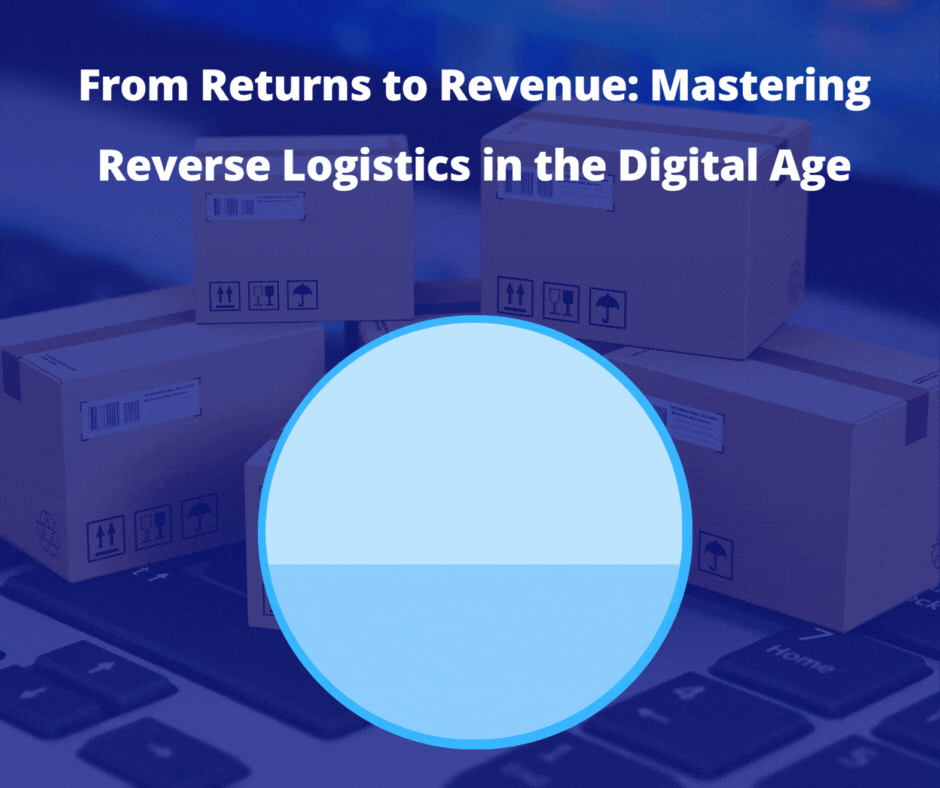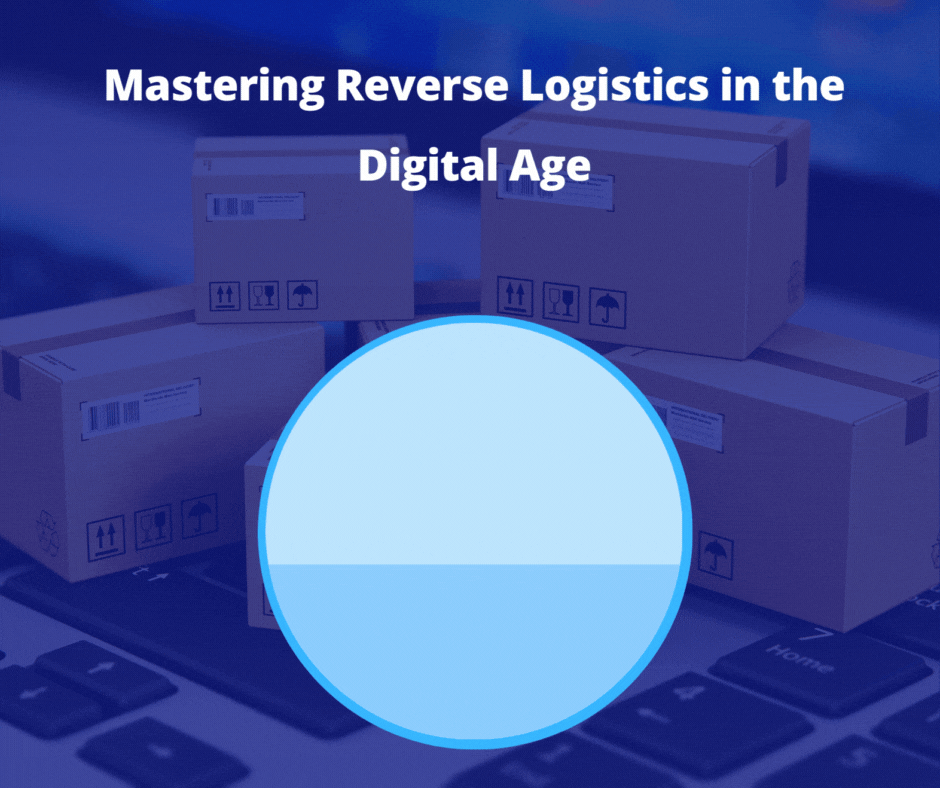
How to Process Returns Quickly, Easily & Efficiently
Introduction to Reverse Logistics in the E-Commerce Era
The e-commerce boom has revolutionized how businesses operate, with global reach and speedier services. However, this expansion brings challenges, particularly in managing product returns, which can be complex and costly. Reverse logistics—the handling of returned goods—is pivotal for maintaining customer satisfaction and operational efficiency. As online shopping escalates, so does the frequency of returns, which are influenced by factors like product mismatch, size issues, or damage during transit.
Understanding Reverse Logistics
Reverse logistics involves every step once a customer begins returning a product, from the initial return request to the restocking or disposal of the item. Unlike traditional logistics, which focuses on delivering products to customers, reverse logistics deals with the flow of goods from the customer back to the seller. This process is essential for businesses to reclaim value, reduce losses, and improve customer satisfaction.
Reverse logistics refers to the process of moving goods from their typical final destination back to the manufacturer or distributor for return, refurbishment, or recycling. It reverses the traditional supply chain flow, making it critical in shipping, local commerce, and international trade.
Relevance in Shipping
In shipping, reverse logistics is pivotal for managing returns efficiently and cost-effectively. This is especially relevant as online shopping and global trade increase, leading to higher return rates. Efficient reverse logistics can minimize transportation costs and streamline the process of returning products across national and international boundaries.
Local Commerce
For local commerce, reverse logistics supports sustainability and customer satisfaction. Retailers can offer return and recycling services, enhancing consumer trust and loyalty by providing convenient return options. This is crucial for maintaining a competitive edge in a marketplace where consumers increasingly value service flexibility and eco-conscious practices.
International Trade
Regarding international trade, reverse logistics is vital for handling cross-border returns, which are more complex due to regulatory and logistical challenges. Effective reverse logistics helps companies adhere to various international returns, refurbishments, and waste disposal regulations. Moreover, it enables firms to recover value from returned goods through refurbishing or redistributing them in different markets, which can be economically beneficial.
Overall, reverse logistics is not just about returns. It’s also an integral part of the supply chain that affects profitability, customer retention, and environmental sustainability. Efficient reverse logistics practices can help businesses manage returns at lower costs and with higher customer satisfaction, which is increasingly essential in a globalized market where goods move across borders frequently.
Key Benefits of an Efficient Reverse Logistics Process
1. Cost Efficiency
Managing returns effectively helps minimize the costs associated with wasted products and storage. Efficient reverse logistics ensures that viable goods are quickly reintegrated into the inventory. This reduces the financial impact of holding and processing returned items.
Here are some key points regarding the cost efficiency of reverse logistics:
- Reduction in Waste Management Costs: By implementing reverse logistics, companies can significantly reduce waste disposal costs. Products returned can be refurbished, reused, or recycled, minimizing the need to dispose of goods and reducing environmental footprint.
- Recovery of Value from Returned Items: Reverse logistics allows businesses to recover value from returned items that can be resold or recycled into new products. This recovery is often cheaper than producing new goods from scratch, thereby saving on raw materials and production costs.
- Efficiency in Inventory Management: Proper reverse logistics processes help maintain accurate inventory levels. This efficiency reduces the need for excess stock and lowers storage costs by optimizing warehouse space used for returned goods.
- Reduced Shipping and Handling Costs: Effective reverse logistics strategies include optimizing routes and consolidating returns. This can significantly reduce transportation and handling costs.
- Improved Customer Retention and Satisfaction: By facilitating easy returns and exchanges, companies enhance customer satisfaction, leading to repeat business and potentially reducing the marketing and customer acquisition costs.
- Cost Savings from Sustainable Practices: Engaging in recycling and refurbishing activities as part of reverse logistics can qualify businesses for government incentives related to environmental sustainability, apart from reducing the ecological impact.
- Better Use of Resources: Reverse logistics ensures that fewer products end up as waste, promoting a more sustainable use of resources. This not only helps in cutting costs but also aligns with global trends towards sustainability, appealing to a broader market.
These points illustrate how effective reverse logistics management can lead to substantial cost savings and efficiency improvements for businesses engaged in shipping, local commerce, and international trade.
2. Enhanced Customer Loyalty
A seamless return process enhances the customer experience, fostering loyalty and repeat business. Customers who find the return process convenient are more likely to shop with the same retailer again, enhancing brand reputation and customer retention.
Here are some ways in which reverse logistics can improve customer loyalty:
- Streamlined Returns Process: Efficient reverse logistics processes make it easy for customers to return products, reducing hassle and enhancing their overall satisfaction with the brand.
- Quick Refunds and Replacements: By quickly processing returns and issuing refunds or replacements, companies demonstrate respect for customer time and money. This fosters trust and loyalty.
- Positive Return Experiences: A customer-friendly return policy, such as free returns or no-questions-asked, can increase customers’ likelihood of future purchases, knowing they can shop risk-free.
- Personalized Customer Service: Effective communication during the return process, including updates on the status of a return, personalizes the experience. This makes customers feel valued.
- Opportunity for Feedback: Reverse logistics allows customers to express concerns and feedback, which companies can use to improve products and services. These changes show customers that their opinions are valued and acted upon.
- Enhanced Brand Image: Commitment to sustainability through recycling or refurbishing returned items can strengthen brand image and attract environmentally conscious consumers.
- Increased Repeat Purchases: A satisfactory returns process can turn potentially adverse experiences into positive ones, encouraging customers to make additional purchases with confidence in the brand’s support infrastructure.
These points illustrate how a well-managed reverse logistics strategy handles returns efficiently and plays a crucial role in building and maintaining customer loyalty.
3. Sustainability
Companies can significantly contribute to sustainability efforts by optimizing the reverse logistics process. Effective recycling, refurbishing, and waste reduction practices in reverse logistics can attract environmentally conscious consumers and reduce the environmental impact of business operations.
Here are some ways in which reverse logistics supports sustainability in the logistics industry:
- Waste Reduction: Reverse logistics facilitates the return and recycling of products, significantly reducing the amount of waste sent to landfills and minimizing environmental impact.
- Product Life Extension: Companies can extend the life of products by refurbishing and reselling returned items. This conserves resources and reduces the need for new raw materials.
- Resource Efficiency: Efficient reverse logistics operations optimize transportation for returns, which can decrease fuel consumption and carbon emissions associated with shipping.
- Promotion of Circular Economy: Implementing reverse logistics supports the transition towards a circular economy, where products are reused and recycled, preserving their value for as long as possible.
- Environmental Compliance: Many companies use reverse logistics to comply with environmental regulations and standards, often requiring the responsible disposal or recycling of products.
- Consumer Participation: Companies can encourage consumers to participate in sustainable practices by providing accessible return options, such as returning products for recycling or refurbishment.
- Brand Reputation: Companies that actively promote their commitment to sustainability through robust reverse logistics processes can enhance their brand image and attract eco-conscious consumers.
These points highlight how reverse logistics improves operational efficiency and plays a critical role in advancing sustainability within the logistics and supply chain sectors.
4. Data Insights
Reverse logistics provides valuable insights into why customers return products, which can help businesses improve their offerings. Analyzing return data helps companies identify and address product or service issues, enhancing quality and customer satisfaction.
Challenges in Reverse Logistics
Implementing a robust reverse logistics process is not without challenges. Businesses must navigate issues such as:
High Operational Demands: Processing returns require significant time and resources, which can strain operational capacity.
Quality Control: Ensuring returned goods meet quality standards for resale adds another layer of complexity.
Regulatory Compliance: Managing returns across borders can involve navigating complex regulatory environments, which adds to the logistical challenges.
Strategic Implementation of Reverse Logistics
For businesses looking to improve their reverse logistics, several strategies can be effective:
1. Technology Integration
Leveraging technology like RFID tags and advanced software can streamline the return process, from tracking items to managing inventory restocking.
2. Clear Return Policies
Transparent and customer-friendly return policies enhance consumer trust and simplify the return process for customers and staff.
3. Dedicated Resources
Allocating dedicated teams and resources to manage returns can improve efficiency and ensure a smoother process for handling returned goods.
4. Outsourcing
Partnering with third-party logistics providers can offload the complexities of reverse logistics, allowing businesses to focus on core operations.
Wrapping Up
As e-commerce grows, reverse logistics will play an increasingly crucial role in a company’s success. By investing in efficient reverse logistics processes, businesses not only enhance customer satisfaction and loyalty but also improve operational efficiency and contribute to sustainability. Embracing this aspect of supply chain management can lead to significant competitive advantages, making it an essential practice for any forward-thinking business in today’s digital marketplace.



